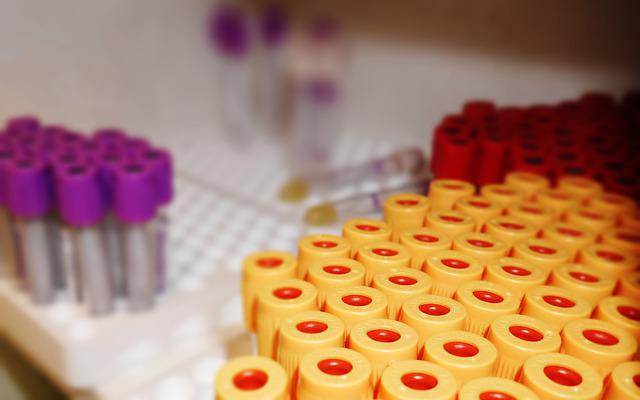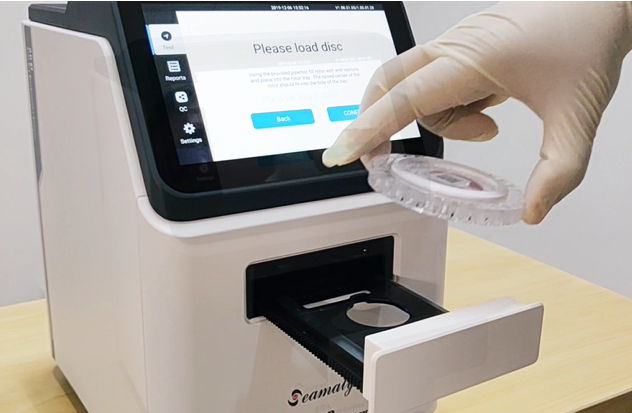release time:2023-07-21 15:59:07
As pet owners, we strive to provide the best possible care for our furry companions. Ensuring their well-being involves not only love and attention but also access to advanced medical diagnostics. One crucial aspect of veterinary medicine is hematology, the study of blood and its components. In this article, we will explore the significance of veterinary hematology analyzers in pet healthcare, the importance of hematology in veterinary medicine, and the differences between 3-Part and 5-Part veterinary hematology analyzers, as well as the cutting-edge advancements in blood analysis technology.
A veterinary hematology analyzer is a sophisticated medical device designed to examine blood samples from animals. It automates the process of blood analysis, providing accurate and rapid results. These analyzers utilize various techniques, including impedance, light scatter, and fluorescence, to measure different blood parameters, such as red blood cells, white blood cells, platelets, hemoglobin, and hematocrit.
Veterinary hematology analyzers consist of a sample handling system, a cell counter, and a software interface. When a blood sample is introduced, the analyzer processes it to obtain quantitative data about the blood cells' concentration and characteristics. The results are displayed on the interface, allowing veterinarians to assess the animal's health status quickly.
Automated hematology analyzers have revolutionized veterinary medicine. They offer consistent and precise results, reducing the likelihood of human error associated with manual methods. Additionally, these analyzers significantly speed up the diagnostic process, enabling prompt treatment decisions and better patient outcomes.
Hematology is a fundamental aspect of veterinary care. Blood analysis helps veterinarians understand an animal's overall health, detect various diseases, and monitor treatment effectiveness. From routine check-ups to diagnosing serious conditions, hematology plays a vital role in providing comprehensive care for our beloved pets.
Various blood parameters hold valuable information about an animal's health. Red blood cells (RBCs) carry oxygen, white blood cells (WBCs) defend against infections, and platelets aid in blood clotting. Additionally, hemoglobin and hematocrit levels indicate the blood's oxygen-carrying capacity and volume, respectively.
Hematology analysis assists in the early detection of diseases like anemia, infections, and immune disorders. Moreover, it helps monitor treatment progress and assess an animal's response to medications or therapies.
3-Part analyzers provide essential blood cell counts, including RBCs, WBCs, and platelets. While they offer valuable information for general health assessments, they might lack the granularity needed for specific diagnoses.
5-Part analyzers, on the other hand, provide a more comprehensive analysis by distinguishing different types of WBCs, such as neutrophils, lymphocytes, monocytes, eosinophils, and basophils. This detailed information aids in diagnosing specific infections, inflammatory conditions, and even some types of cancers.
Veterinarians must consider their patient load, budget, and specific diagnostic needs when choosing between 3-Part and 5-Part analyzers. Practices dealing with a high volume of cases and requiring detailed blood analysis may benefit from investing in 5-Part analyzers, while smaller clinics might find 3-Part analyzers sufficient for routine check-ups.
Over the years, veterinary hematology analyzers have evolved significantly. From manual blood counts to automated 3-Part analyzers, the technology has come a long way in improving diagnostic efficiency and accuracy.
As veterinary medicine continues to progress, so do the capabilities of hematology analyzers. Two outstanding examples of these advancements are the Seamaty VBC30 and VBC50. The Seamaty VBC30 is an impressive 3-part Automatic Veterinary Hematology Analyzer with a 10.4" color touch screen for easy navigation. It requires only 20uL of whole blood and minimal reagents, reducing consumption and cost. Maintenance is hassle-free with automated cleaning and fault processing. The VBC30 serves 13 species, and users can program three additional animals, delivering accurate results with 21 reportable parameters. The Seamaty VBC50 sets a new standard for 5-part analyzers, featuring a 10.4" color touch screen and requiring minimal blood and reagent usage. It caters to 13 species, with 29 parameters, ensuring comprehensive insights for veterinary practices.
Modern hematology analyzers boast impressive capabilities, such as multi-parameter analysis and integrated software for data interpretation. Some advanced models can even provide reticulocyte counts, measure cell volume distributions, and assess cell morphology.
These advancements empower veterinarians with a wealth of information, enabling more precise diagnoses and tailored treatment plans. As a result, pets receive better care and improved prognoses for various health conditions.
Veterinary hematology analyzers have become a pawsitively essential tool in modern pet healthcare. Hematology plays a crucial role in diagnosing diseases, monitoring treatment progress, and ensuring our furry friends lead healthy lives. With advancements in blood analysis technology, veterinarians are equipped with powerful diagnostic tools that lead to better outcomes and an enhanced quality of life for our beloved animal companions. By embracing these innovative technologies, we can continue to provide our pets with the best care possible.


2022-07-22
Biochemical diagnosis refers to the diagnostic method that involves enzyme reaction or antigen and antibody reaction, mainly used to determine biochemical indicators such as enzymes, sugars, lipids, proteins and non-protein nitrogen, inorganic elements, functional indicators or proteins.

2021-11-17
What do you need to check for pet health check? What do these exams do? The next three articles share information about the Physical exam, Blood test, Complete blood count /CBC, Thyroid panel, Heartworm antigen test, FeLV/FIV test, Fecal exam, Urinalysis, and the Pet Health Check. X-ray, skin examination, major eye examination, Ear cytology, Fine needle aspiration Fine needle aspiration.

2021-10-21
In recent years, a variety of home medical devices that are easy to operate, practical, and provide real-time feedback on health information have been favored by many groups. Home medical equipment has also become essential for many families. What is a home medical device?